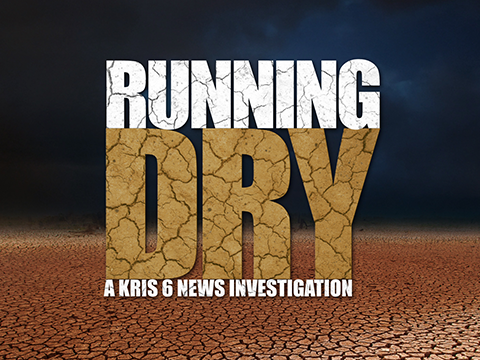CORPUS CHRISTI, Texas — A group of students from Texas A&M-Corpus Christi has created a robot for their capstone project that they describe as a Roomba for the ocean.
Their device is able to clean up about 20 pounds of trash like plastic water bottles and beer cans. They called it A.D.D.R.A.R. which stands for Autonomous Debris Detection and Removal Aquatic Robot.
The students said they are recycling the trash they find with the robot and the scrap metal they didn’t use for the project because they want to create a greener world.
“Because our university is surrounded by water we wanted to create a project that serviced the environment…serviced the water that we interact with on a daily basis,” said Craig McCann, the project’s leader and a TAMUCC mechanical engineering student.
The device uses a camera system and GPS on their phones to detect trash. The robot can be controlled with a remote, but it is also autonomous. The body of the robot is made out of aluminum and welded. The welder of the project, Riley Brown, has been welding for around eight years and said the device will be able to serve the school in the future even after they graduate.
“We ended up giving the school a product that’s going to last a long time so that they can build upon it because it’s made of aluminum and because it’s not going to rust and because nothing is bolted together," Brown said. "It's all welded together and painted…it’s corrosion-resistant.”
Group members said they had a budget of $600 but only used about $420.
They said all of their members enjoy being on the ocean, whether it’s fishing or surfing.
“I’ve grown up here on Padre Island my whole life, surfing and fishing and all that so to see this place just get filled up with plastic is kind of heartbreaking," Brown said. "So, it kind of gives us a little bit more initiative to try and help out."
They said the device can go around 3.5 mph, miles an hour, and can fight a current of up to 2 mph and wind of 30 mph, which they measure through the weather forecast every day before using the device.
The robot weighs 60 pounds and measures 4 foot 6 in length and 4 foot 2 across and can also work in a lake or river, they said.
Issac Vargas, an electrical engineering student at TAMUCC, did the coding and electronic design, designing an AI-based system using object detection trained on 750 trash images, which he went out and recorded.
Vargas said he got the images by going out and getting footage of floating debris and trash. However, he said, the friendships he’s made with his group members while doing the project also make the project even more special.
“My favorite part about the robot is being with my team and all the friendships that we got from it and how cool we are with each other,” Vargas said.
Project members said they have invested more than 400 hours into the project and they will be entering a capstone competition at TAMUCC this Friday where they are expecting to win. They said their professor Dr. Ruby Mehrubeoglu will be using the device to further her research on seagrass.





